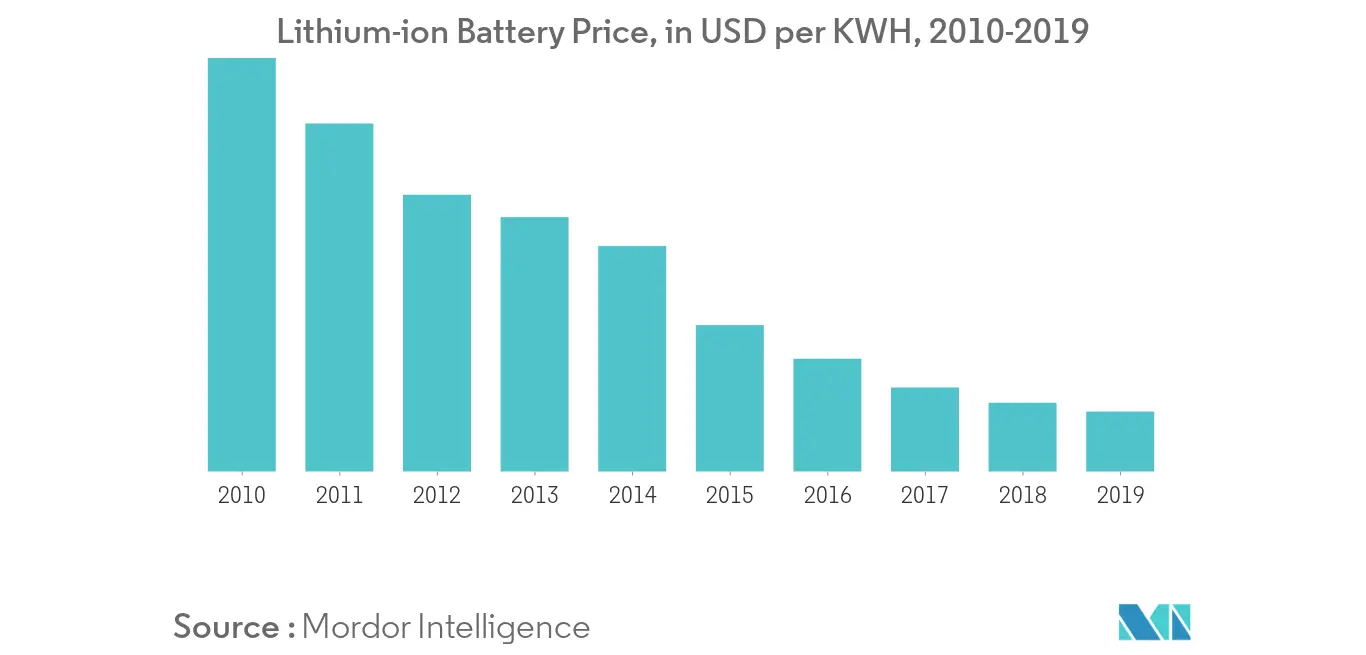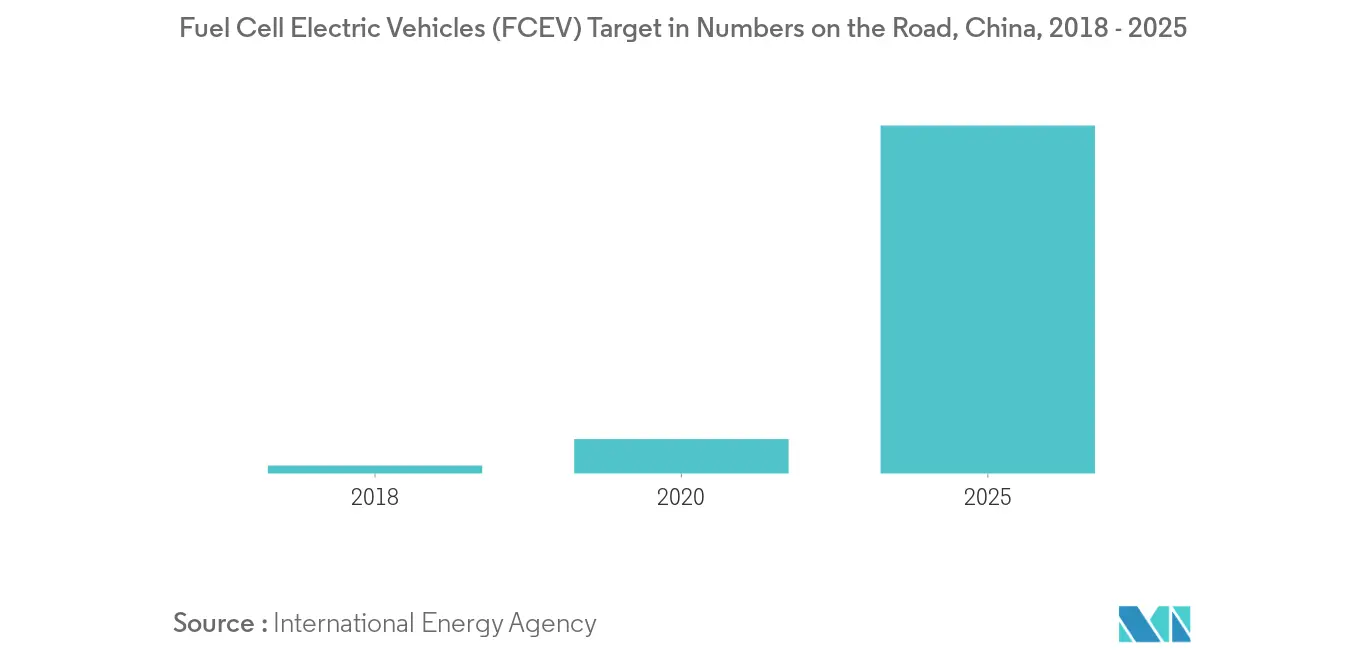Market Trends of China Fuel Cell Industry
This section covers the major market trends shaping the China Fuel Cell Market according to our research experts:
Transportation Sector to Dominate the Market
- China has great potential in the fuel cell market as the government is increasingly focusing on ways to utilize clean energy technology in order to switch to a low-carbon economy.
- In 2018, Hyundai Motor and Beijing-Tsinghua Industrial R&D Institute (BTIRDI), signed a memorandum of understanding (MOU), to establish a Hydrogen Energy Fund worth USD 100 million, to support the adoption of fuel cell vehicle in China in coming years.
- In addition, under the 13th Five-Year Plan, the country is expected to promote research and development of fuel cells, step up building hydrogen stations, and achieve the mass production of fuel cell vehicles by 2020.
- Further, the decreasing price of lithium-ion batteries (LIB) is among the major factors influencing the rapid increase in LIB technology adoption in multiple sectors, such as renewable, automobiles, and others. The increasing adoption of LIB technology is expected to remain a restraining factor for growth of fuel cell market until the technology itself becomes cost-competitive.

China's Ambitious Targets to Drive the Market
- China's aim of having a million units on the road by 2030, achieving this level of penetration will require a steep adoption curve.
- So, the Chinese policymakers expect the market to grow to 5,000 vehicles by the end of 2020 and to 50,000 by 2025.
- China, the world's biggest car market, is putting its manufacturing and policy might behind hydrogen fuel cells, just as it has with battery-electric vehicles.
- China's generous subsidies for fuel-cell subsidies had attracted the attention of major automakers. Last month, Toyota unveiled plans to sell fuel-cell vehicles into the Chinese market via existing partnerships with Guangzhou Automobile Group and FAW Group.


